Tteokbokki, or spicy Korean rice cake, is ones of the most popular Korean dishes and street food in Korea. The rice cakes are soft on the outside and chewy on the inside and coated with an addictive savory, spicy, and slightly sweet sauce.
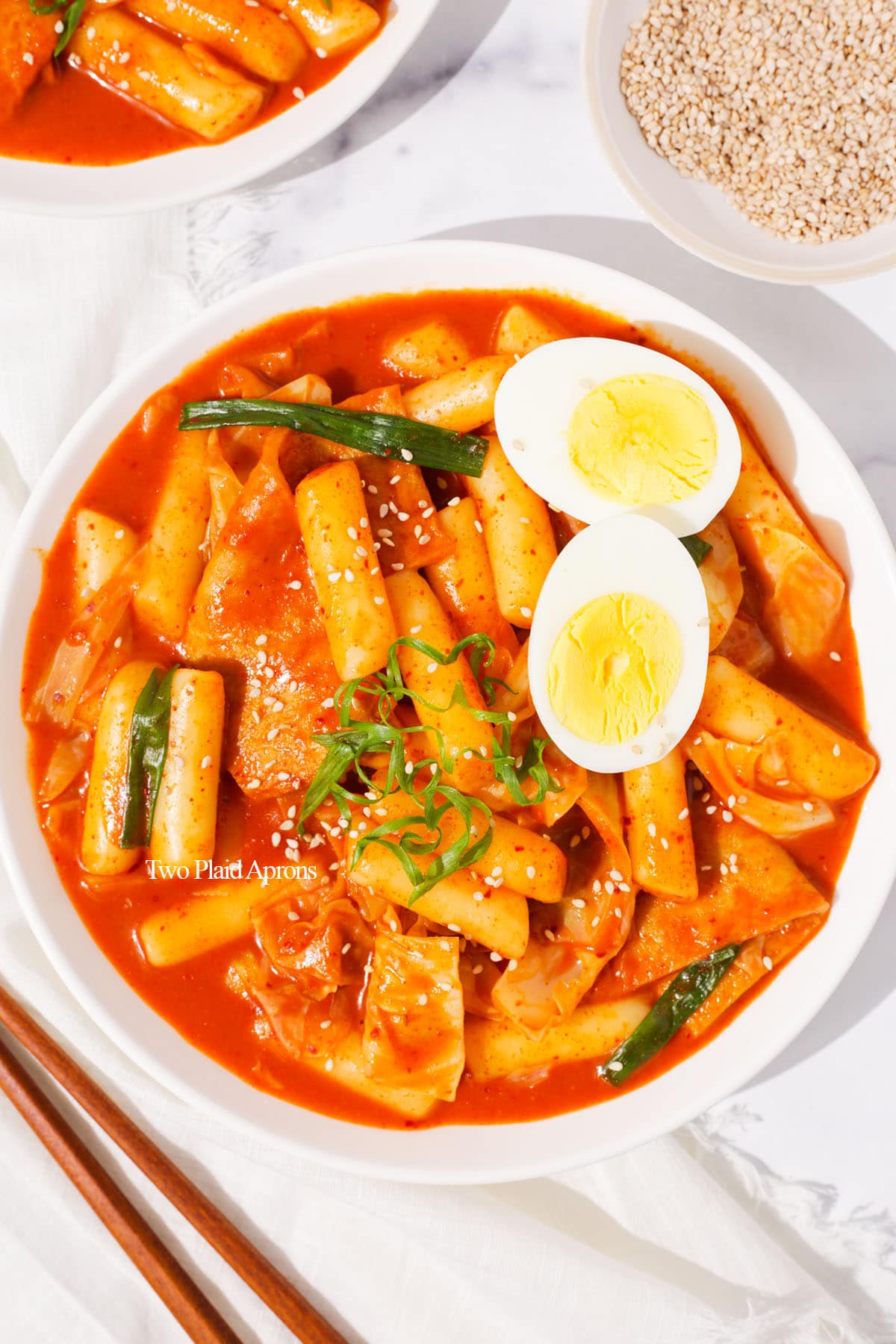
Tteokbokki is probably one of the most iconic dishes seen in Korean dramas, next to Korean BBQ and Korean corn dogs.
The rice cakes always looked so soft and chewy and coated with glossy red sauce that screams tasty. Pair that with a strip of saucey fish cake or half of a boiled egg. It's too hard to resist! Now you can make it at home in less than 30 minutes and enjoy it while watching your next Kdrama.
Also, try our Korean cream cheese garlic bread, hotteok (Korean sweet pancakes), and kkwabbaegi (Korean twisted donuts) if you're in the mood to try more Korean street foods!
Jump to:
What is tteokbokki?
Tteokbokki (떡볶이), also spelled as ddukbokki and topokki, is a popular Korean dish made with garae-tteok (cylindrical shaped rice cakes), eomuk (fishcakes), hardboiled eggs, green onions. The most popular version is made with a spicy, slight sweet, and savory gochujang based sauce, but there's also a non-spicy version called ganjang tteokbokki, tossed in a soy sauce based sauce.
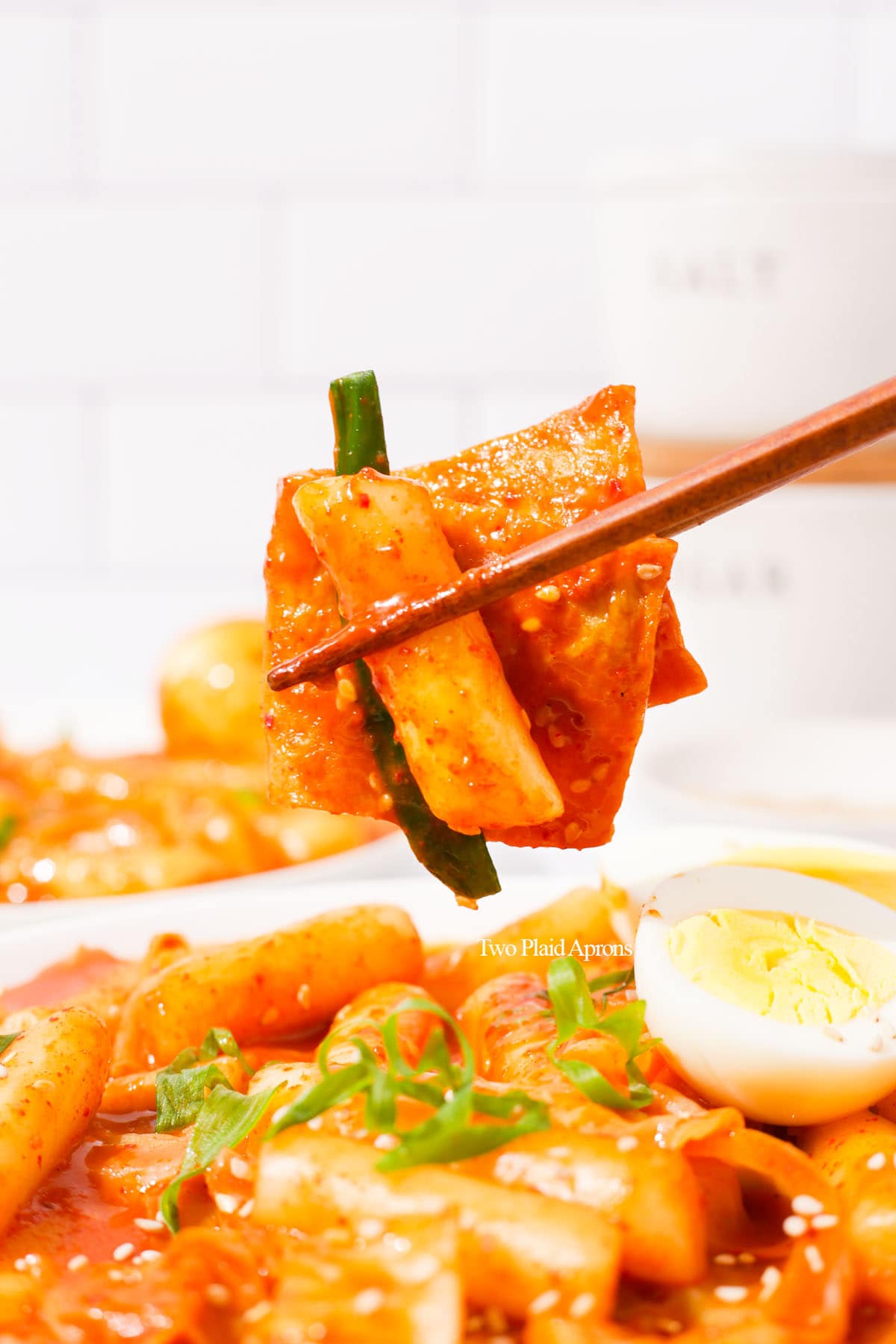
What to eat with tteokbokki
Korean spicy rice cakes can be enjoyed on it's own as a snack or as a meal, but if you're looking for something to go with these spicy rice cakes, here are some of our recommendations:
- Eomukguk (Korean fish cake soup) - Sometimes also called oden broth. Eomukguk is a classic tteokbokki pairing to help cool the heat and wash the rice cakes down.
- Mandu (Korean dumplings) - The fried version is especially popular with tteokbokki, but steamed and boiled mandu are great too! Use the mandu to mop up the extra tteokbokku sauce.
- Kimbap - Spicy, sweet and savory sauces are kimbap's calling! Plus they are both popular Korean street foods. What better combo! Dip you kimbap into the tteokbokki sauce or make your own combo!
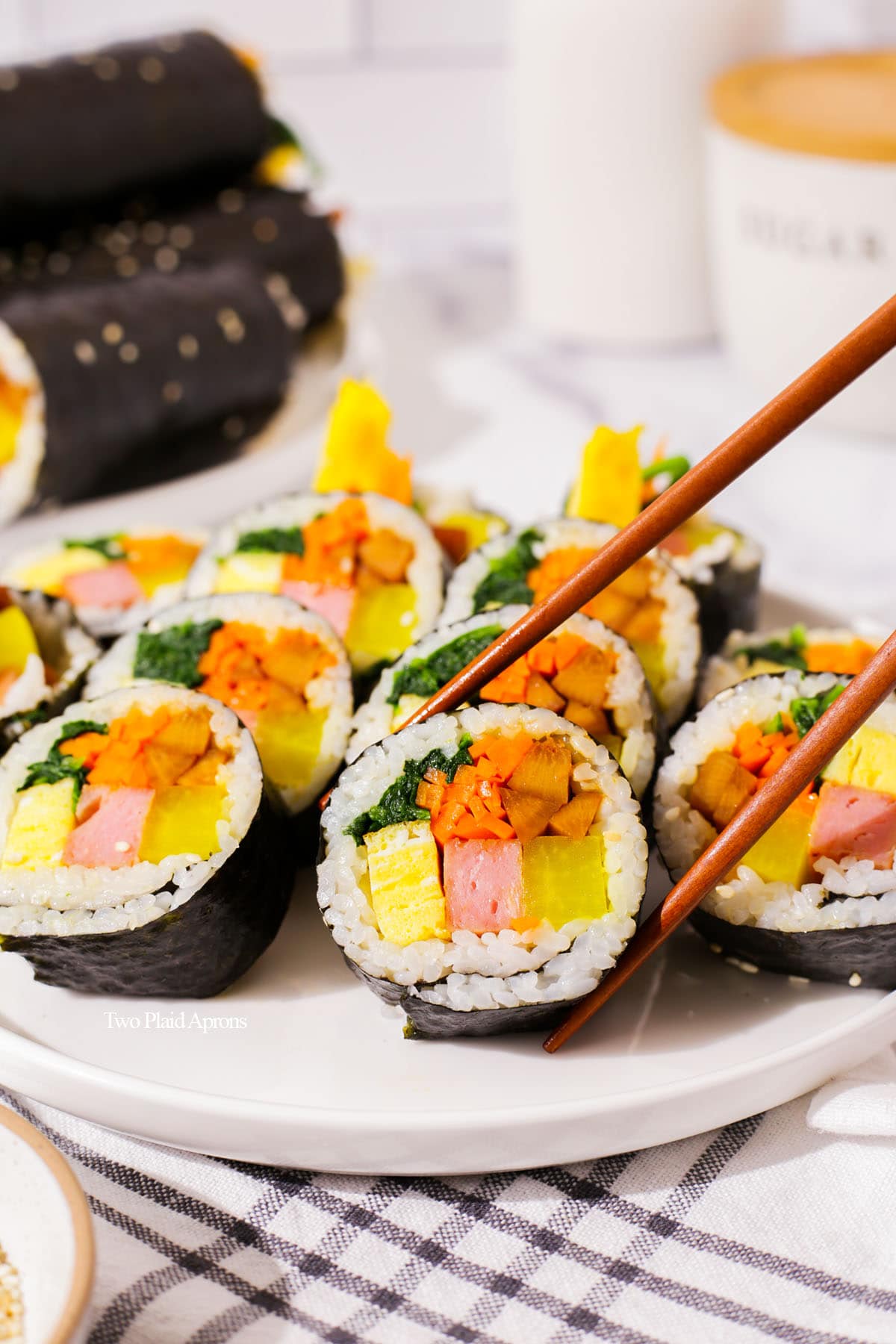
Ingredient notes
Please scroll down to the recipe card for the ingredient quantities!
- Rice cake (tteok) - Make sure to use cylindrical shaped rice cakes (garae-tteok)! You can get them dry or fresh and usually at the refrigerated aisles of Asian markets. Dry ones require soaking and longer cook time.
- Fish cake (eomuk) - We highly recommend using some fish cakes. They add so much flavor to tteokbokki, especially if you are not using anchovy stock! If you can't find fried fish cake sheets, you can use fried fish balls instead, like the ones for hot pot. DON'T use the ones meant for ramen!
- Green cabbage and boiled egg - These two are optional add-ons, but we highly recommend! The cabbage adds texture and natural sweetness and boiled eggs are a classic. Normally, the eggs are hardboiled, but feel free to cook to your desired doneness.
- Green onion and sesame seeds (optional garnish)
- Water or anchovy stock (dashima) - Korean street food vendors usually use just water. But you can also make anchovy stock for more flavor and nutrition.
- Gochujang (Korean red pepper paste) - It's the base for making tteokbokki sauce. Do beware that some gochujang is hotter than others, if you have lower spice tolerance.
- Gochugaru (Korean red pepper flakes) - Gochugaru adds more heat and color to the tteokbokki.
- Soy sauce - We recommend using regular soy sauce, NOT low sodium. Low sodium soy sauce will not not season the sauce enough.
- Sugar - Regular granulated sugar or raw sugar is great. If you want, you could use honey instead, however, it will slightly change the flavor.
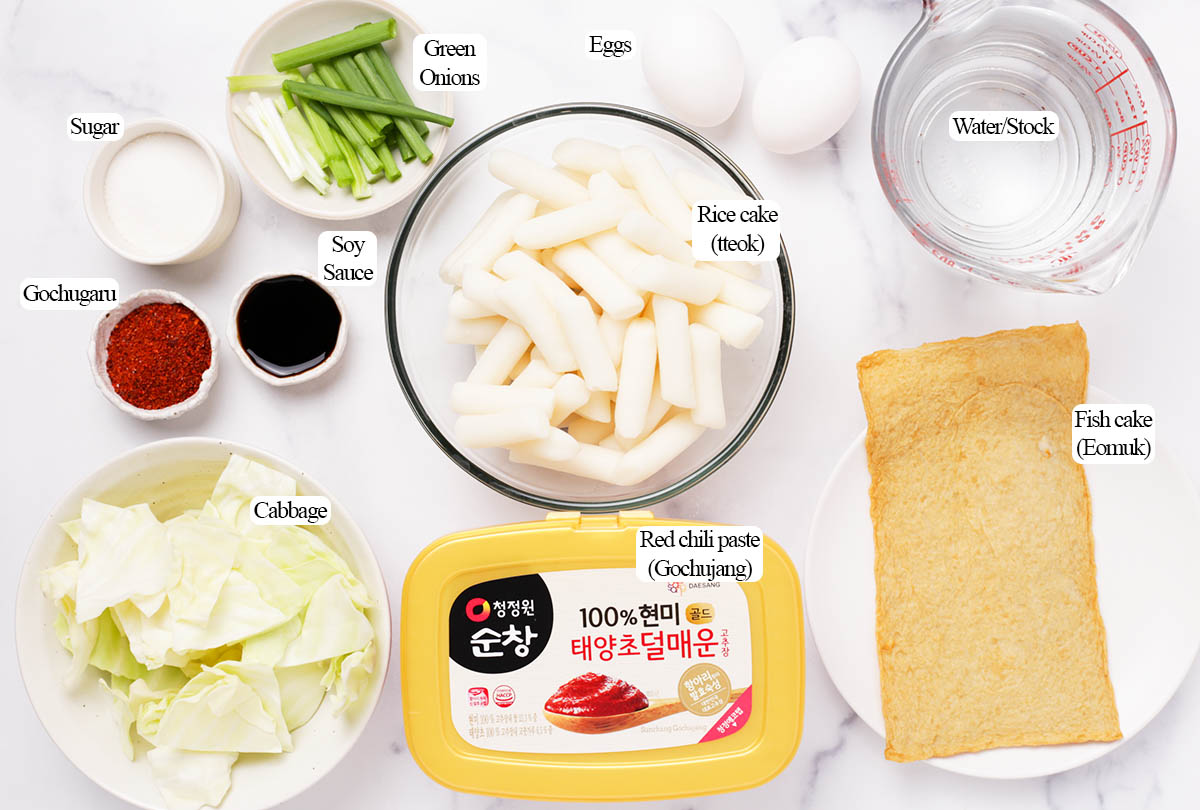
How to make tteokbokki
Please scroll down to the recipe card for the full recipe and instructions!
1. Prepare the ingredients. Soak rice cakes in warm water and cut the fish cake, cabbage, and green onions. Also, prepare some boiled eggs.
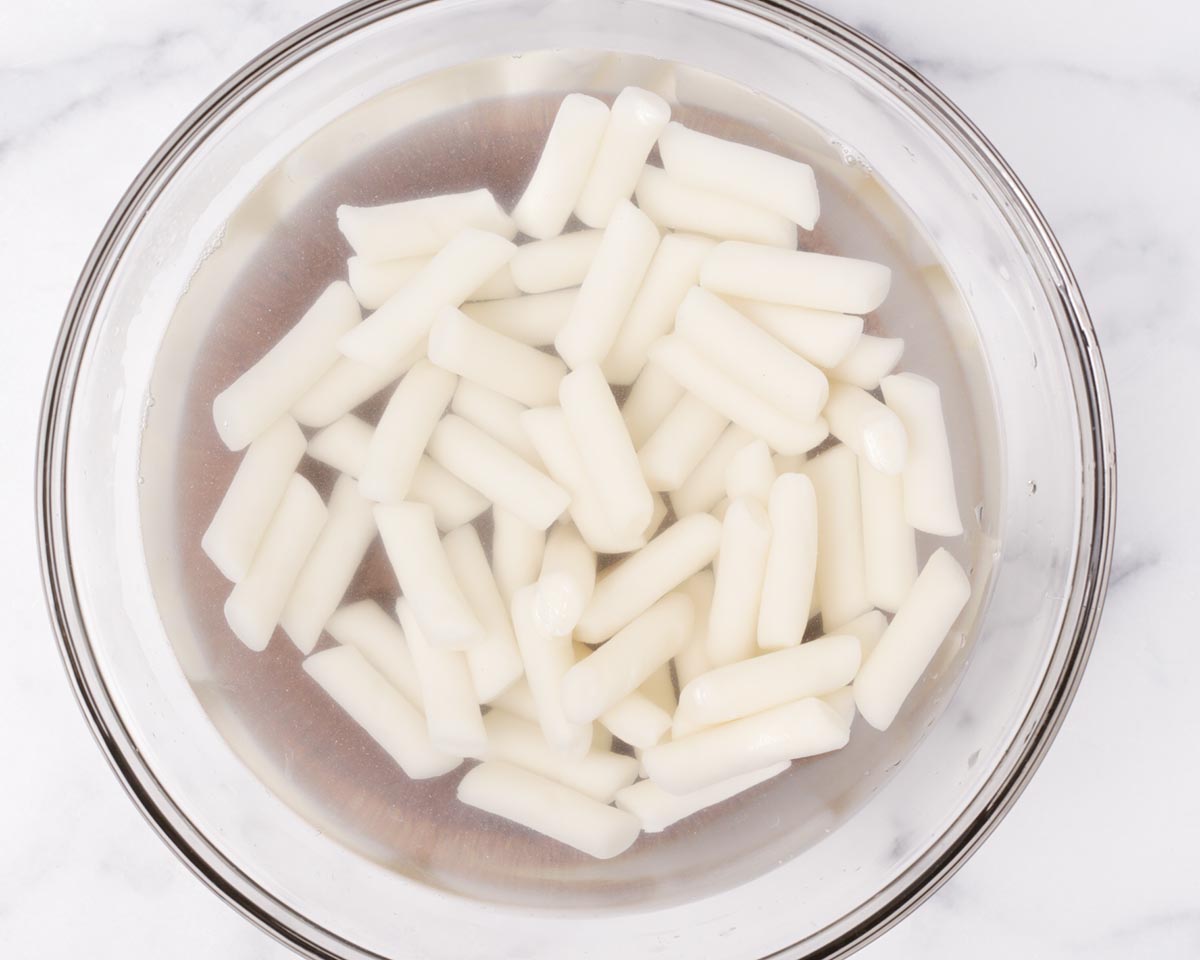
🌟 Pro tip: Only the dry rice cakes require soaking. If you're using fresh rice cakes (usually labeled on the package), you can skip the soaking.
2. Make the sauce. Into a tall pan, add the water, gochujang, gochugaru, sugar, and soy sauce. Mix well and bring to a boil.
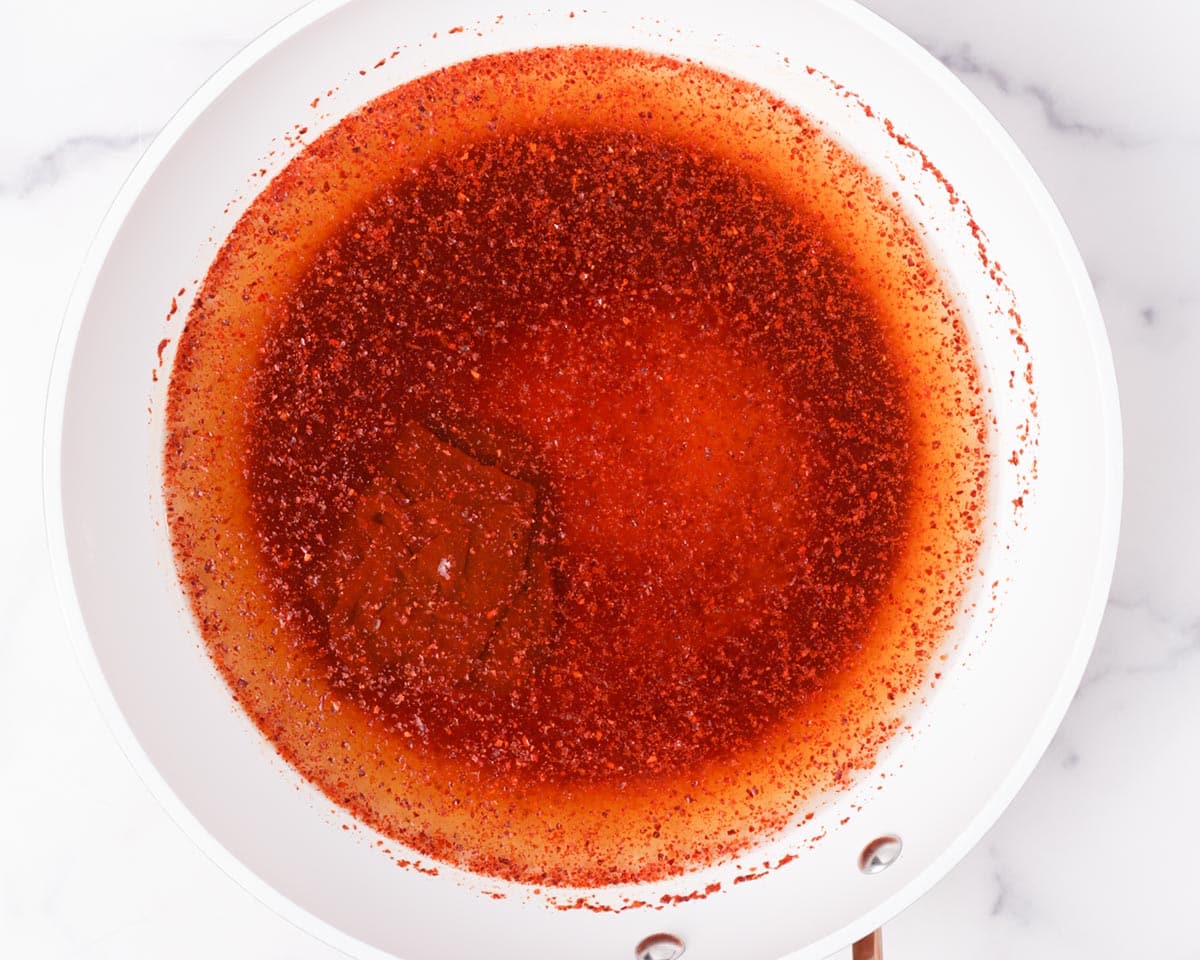
3. Cook the rice cakes. Add the rice cakes and cook for about 5 minutes. Make sure to stir occasionally.
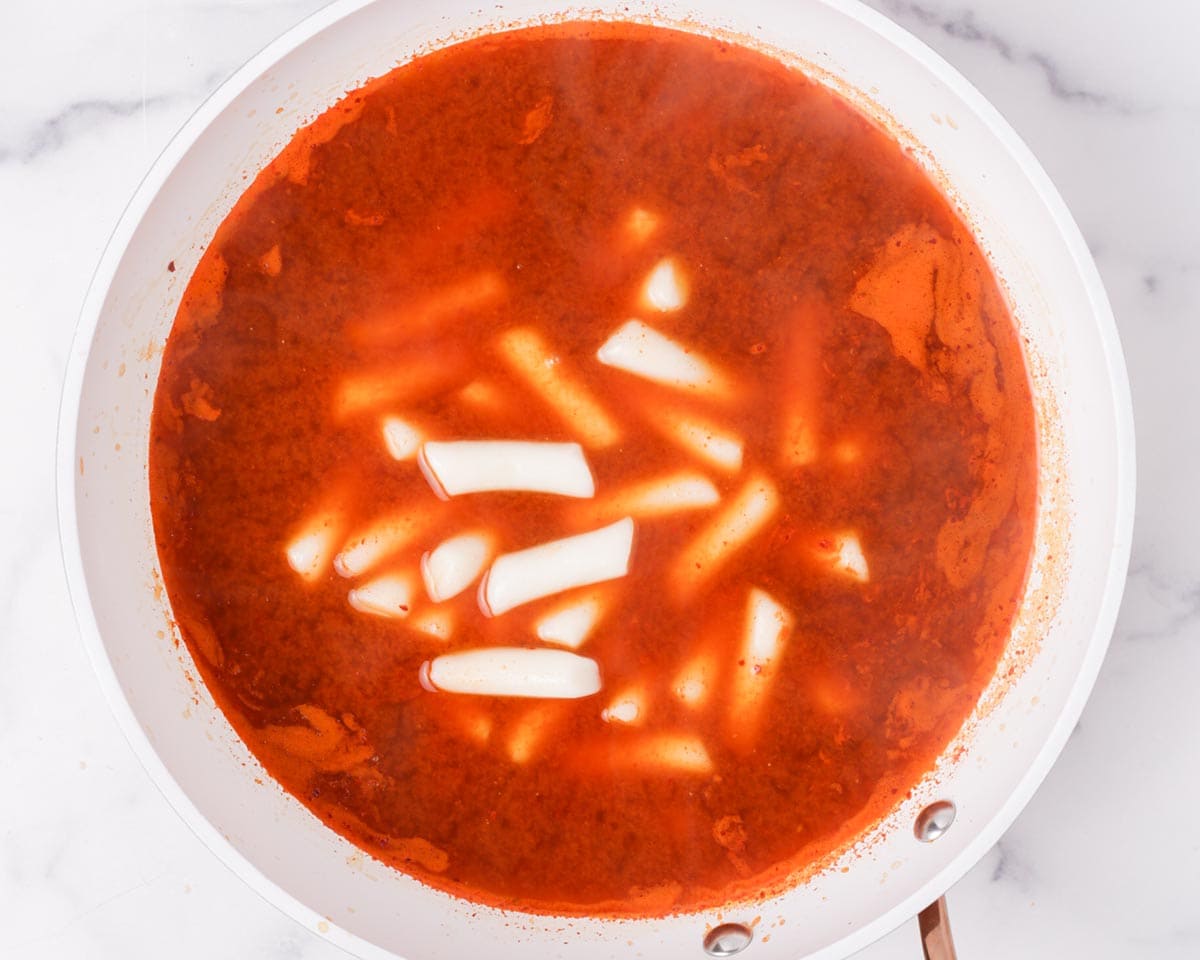
4. Add the fishcakes and other add-ons. First, add the fish cakes, cabbage, and the white parts of the green onions. Simmer for another 4 to 5 minutes. When the rice cakes are almost done, add the boiled eggs and green parts of the green onions.
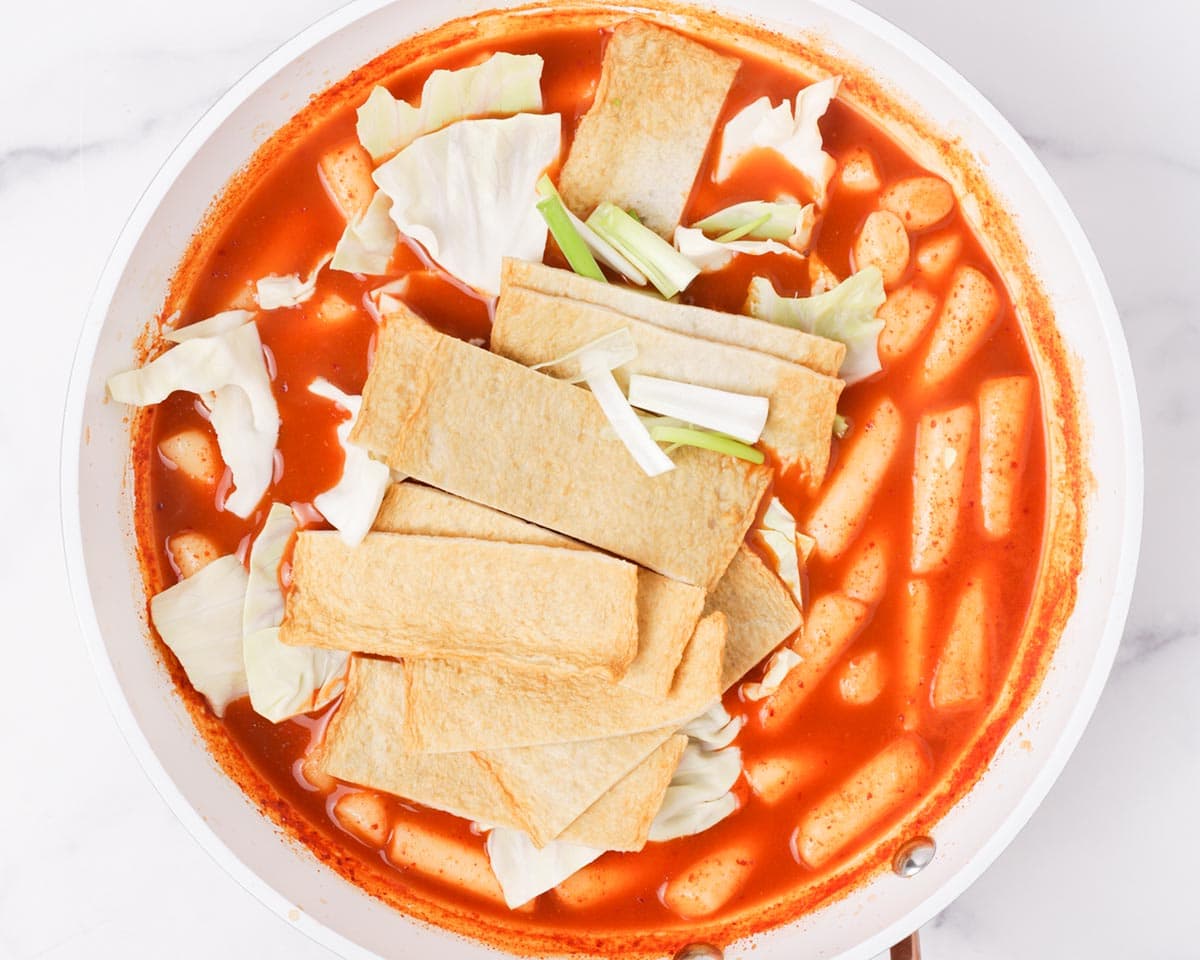
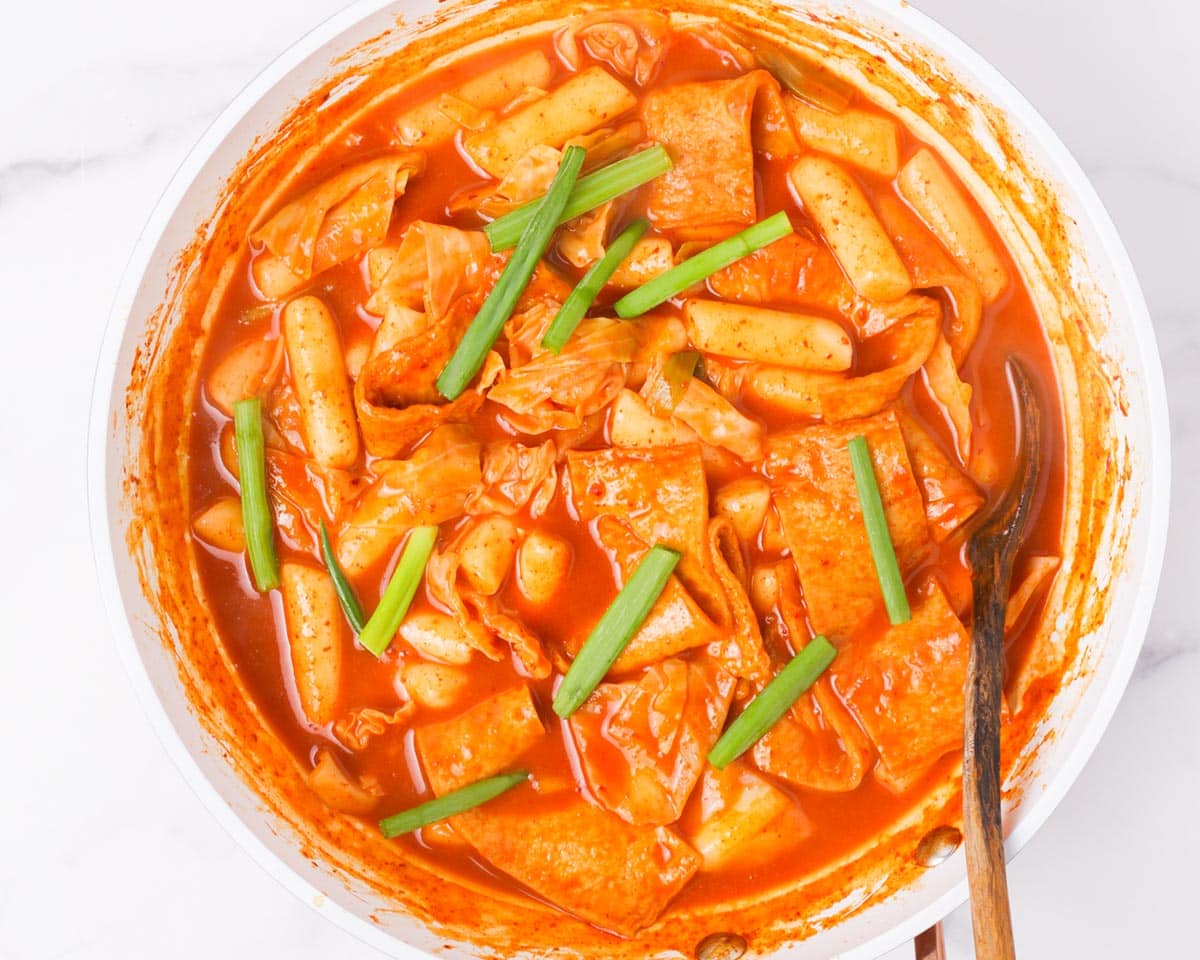
🌟 Pro tip: It is very imporatnt to stir occasionally at this point. You'll notice that the sauce is thicker, which means the rice cake will have more tendency to stick to the bottom of the pan.
5. Garnish and enjoy. Garnish with sesame seeds and more green onions if you wish. Enjoy while hot!
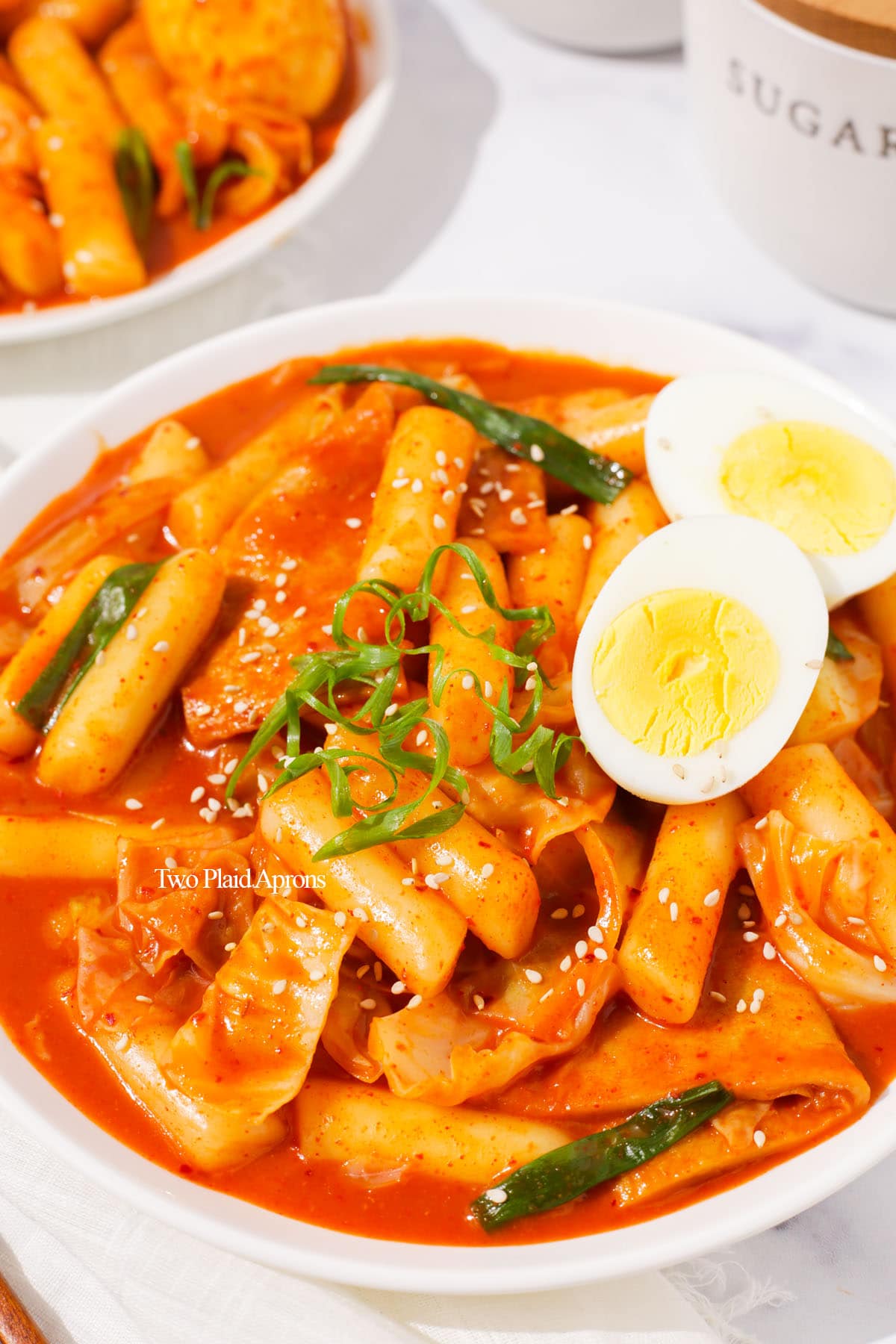
Perfect boiled eggs
To make boiled eggs for your tteokbokki, place the eggs into a saucepan or pot and fill it with enough water to cover the eggs entirely. Bring the water to a boil, then take the pot off the heat. Cover the pot and let the eggs sit for the following times, based on your preferred doneness:
- Soft-boiled: 4 to 6 minutes
- Medium-boiled: 7 to 8 minutes
- Hard-boil: 10 to 12 minutes
📝 Note: The cook time for the eggs are based on cold, large eggs in a heavy bottom stainless steel saucepan.
Once the time is up, shock the boiled eggs in a bowl of ice water to stop the cooking. Let the eggs cool for about 10 minutes. Peel and add to the tteokbokki at the final minute or two of cooking.
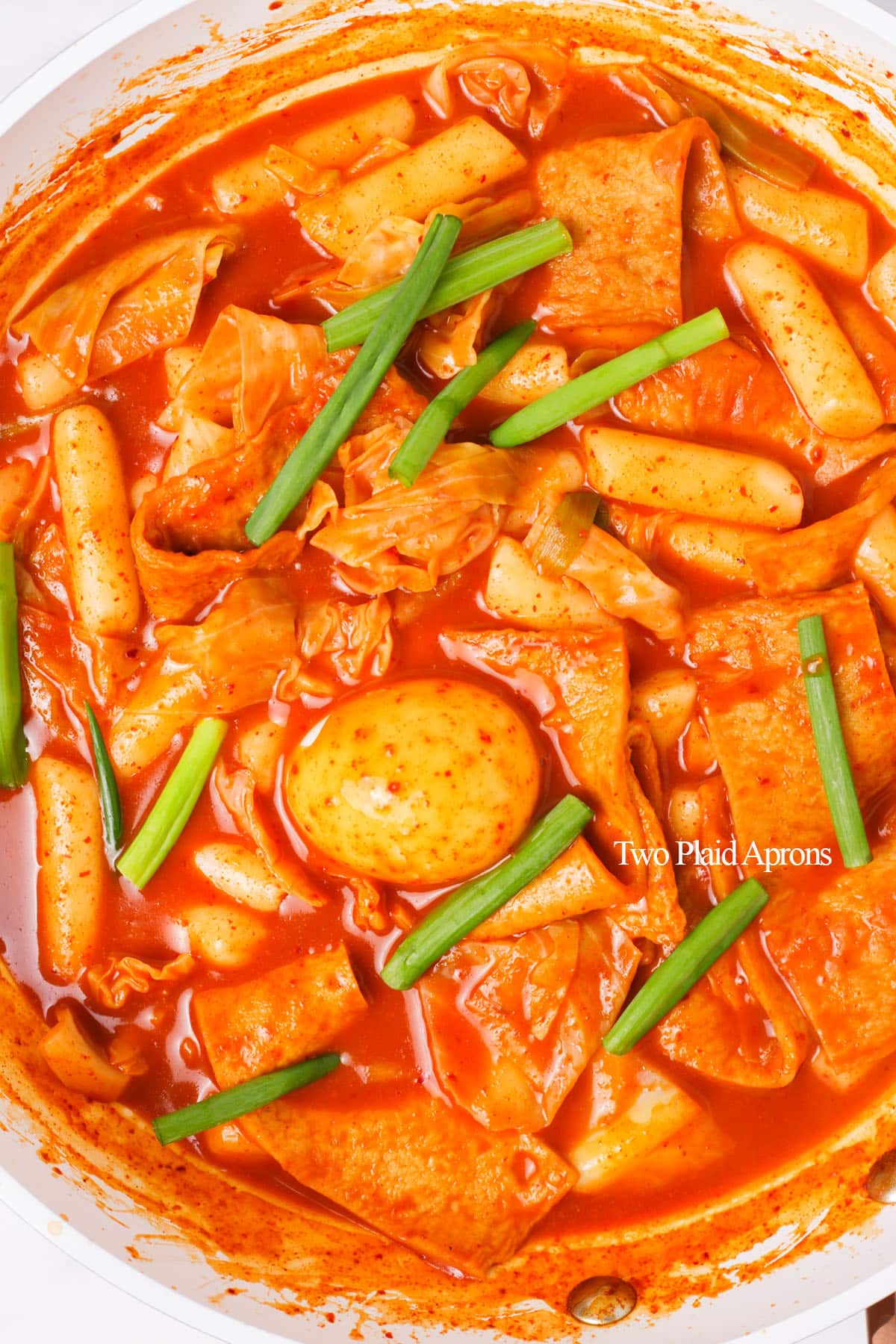
Recipe tips
- Fresh tteok vs dry tteok. Fresh rice cake does not need soaking and the cook time will be much shorter. If using fresh tteok, add the add-ons with the tteok and cook for about 3 to 5 minutes, total, or according to package instruction.
- Use more gochugaru if you want the tteokbokki spicier. Likewise, to make tteokbokki a little less spicy, use less or skip the gochugaru.
- Add the boiled egg at the last minute to prevent overcooking. The eggs will only need to be heated up.
- Enjoy the tteokbokki while hot! The rice cakes tend to go from soft and chewy to a tougher chew when they become cold, so try to enjoy the tteokbokki while hot!
Storage and reheating
Although tteokbokki is best enjoyed shortly after making, leftover tteokbokki can be stored in the fridge for 3 to 4 days, in an airtight container. We recommend using glass containers or plastic containers you don't mind staining.
To reheat, put the leftover tteokbokki in a pan or pot over medium with a small amount of water. Stir occasionally, until the rice cakes are hot and becomes soft and chewy again.
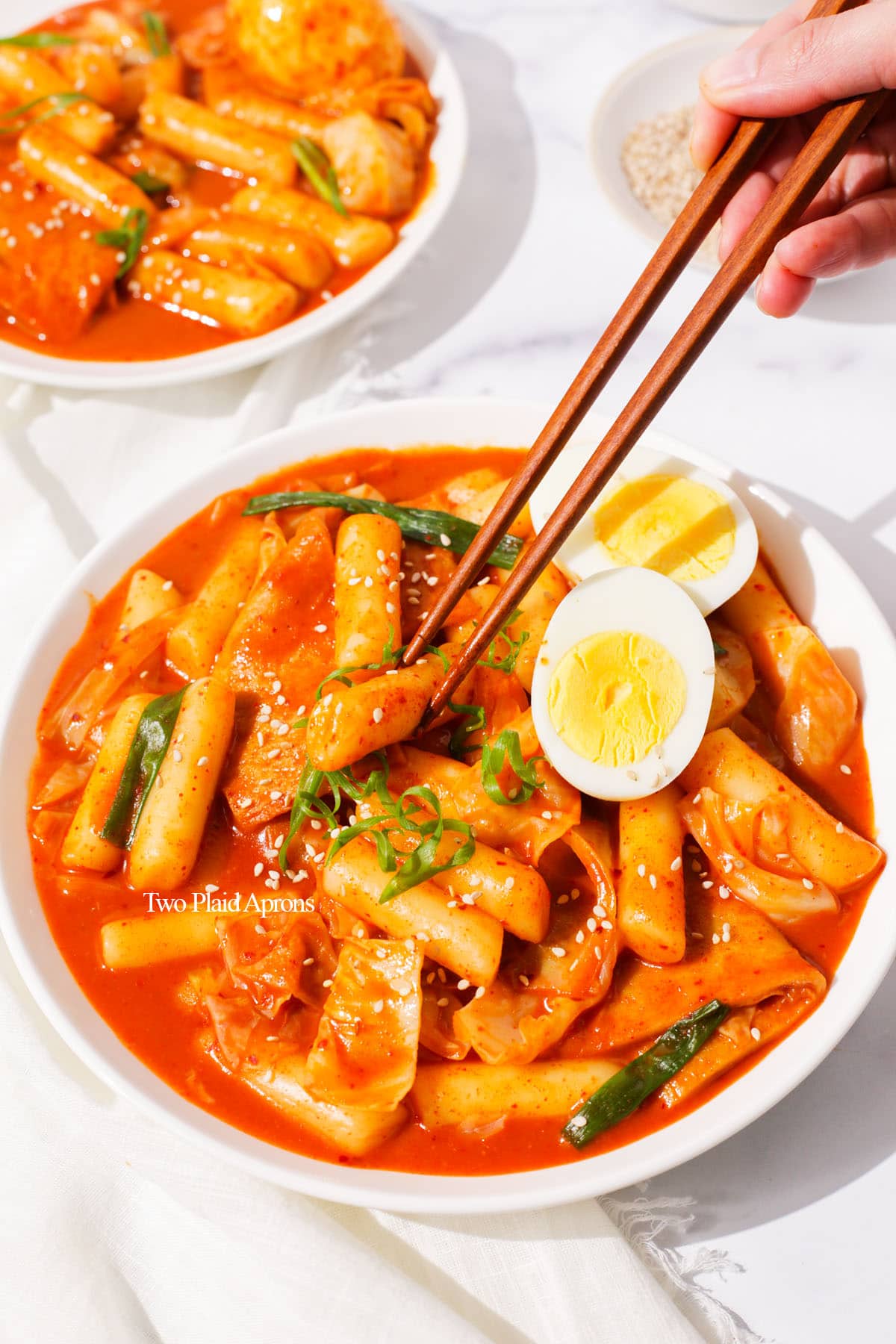
FAQ
The most popular kind of tteokbokki, made with gochujang, is savory with mild to medium heat and a little sweetness.
Garae-tteok, a cylindrical shaped rice cake, is the proper rice cake for making tteokbokki. These types of rice cakes sometimes also go by the names of tteokmyeon and tteokbokki tteok, which literally translates to "rice cake noodle" and "tteokbokki rice cake".
Garae-tteok are ideal because they can maintain their nice chewy texture, even after soaking in the sauce for a long time. Also, they are perfect for snacking with a toothpick or skewer!
Once the rice cakes are hot, they become soft and chewy. As they cool, the rice cakes will become a bit chewier. We recommend enjoying tteokbokki while it's hot for the best texture.
Typically, tteokbokki sauce is made of water or dashima (anchovy stock), gochujang, gochugaru, soy sauce, and sugar.
Often time, tteokbokki is made with cabbage, fish cakes (eomuk), and boiled eggs. You can totally enjoy it on its own. However, tteokbokki is also commonly enjoyed with eomukguk (fish cake soup), fried or steamed mandu, and kimbap.
If you’ve made this recipe or any recipes from our blog, please tag us on Instagram using #twoplaidaprons! You can also tag us in your Instagram stories using @two_plaid_aprons. We would love to see your creations! It absolutely makes our day! 🥰
📖 Recipe
Tteokbokki
Ingredients
- 1 pound Korean rice cake (tteok)*
- 3 cups water or dashima (anchovy stock)
- ⅓ cup gochujang (Korean red pepper paste)
- 1 tablespoon gochugaru (coarse) more or less to your spice preference (Korean red chili flakes)
- 1 tablespoon granulated sugar
- 1 tablespoon regular soy sauce NOT low sodium
- 2 sheets Korean fish cake cut into strips (about 3oz/85g)
- 7 ounces green cabbage cut into 1 to 2 inch pieces (more or less to preference)
- 1 stalk green onion cut into 2 inch pieces (plus more for garnish)
- 3 boiled eggs cooked to your preference* and peeled
- Toasted sesame seed (optional for garnish)
Instructions
- Place the rice cakes into a large bowl and cover warm water. Let the rice cakes soak for at least 10 minutes while you prep the rest of the ingredients.
- Into a tall pan, like a sauté pan, add the water gochujang, gochugaru, sugar, and soy sauce. Mix well and bring it to a boil.
- Once the sauce comes to a boil, drain the rice cakes and add to the sauce. Bring it back to a boil, then reduce the heat to a simmer. Let the rice cakes cook for about 5 minutes. Stir occasionally.
- After 5 minutes, add the cabbage and fish cake. Let everything simmer for another 3 to 5 minutes, or until the rice cake is soft and chewy. Make sure to stir frequently to prevent the rice cakes from sticking to the bottom of the pan. Add the boiled eggs and green onions at the last minute of cooking.
- Garnish the tteokbokki with sesame seeds and some sliced green onions if you wish. Enjoy while hot!
Notes
- Rice cake - Depending on the brand of rice cake you use, the cook time can vary. Also, this recipe's cook time is based on dry rice cakes. If using fresh rice cakes, skip the soaking and reduce the cook time to 3 to minutes total, or according to the package instructions.
- Boiled eggs - Traditionally, hard-boiled eggs are added. But feel free to cook the eggs to your own preference. Please refer to the post above for details on how to make perfect boiled eggs for your tteokbokki.
Equipments Recommended
Nutrition
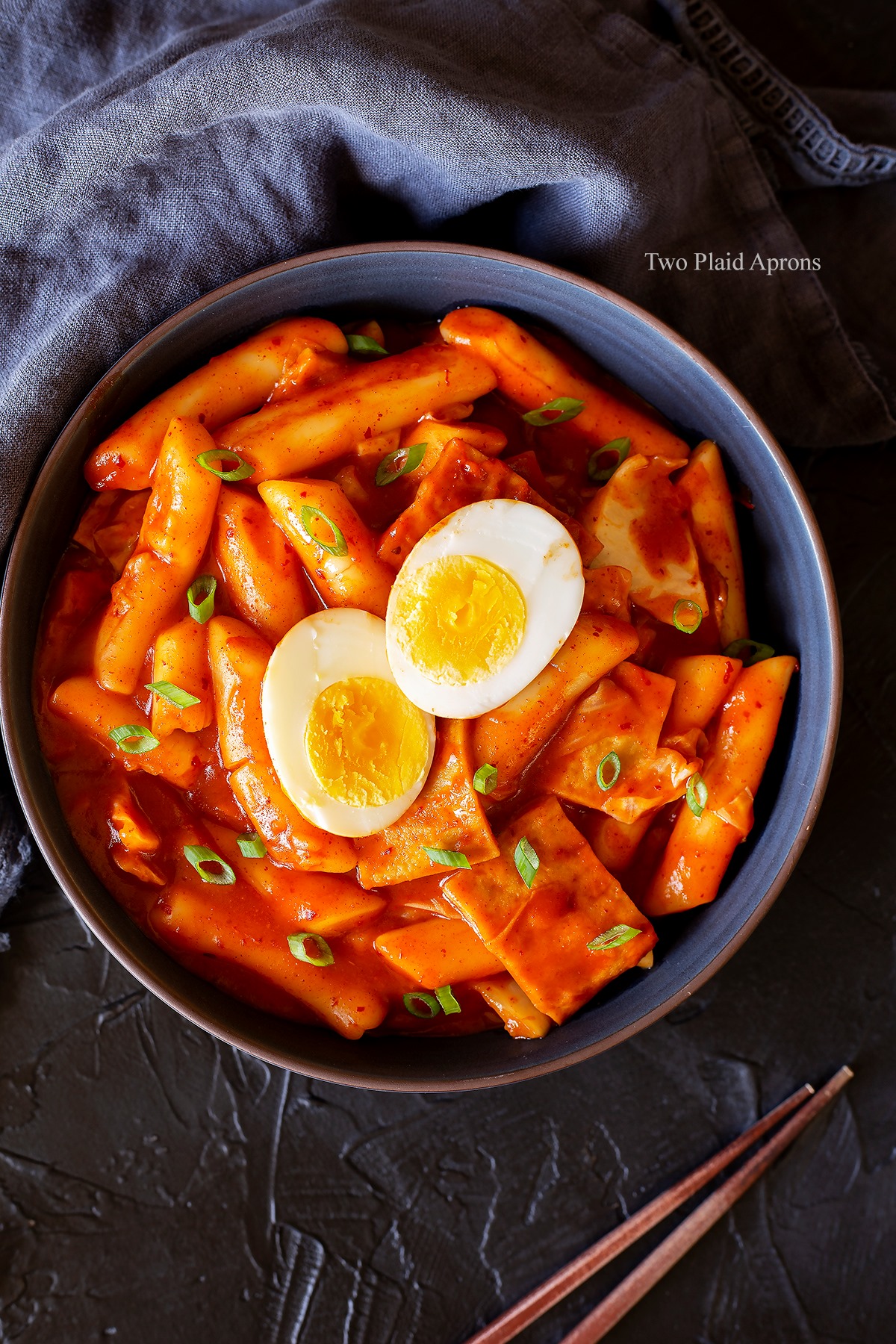

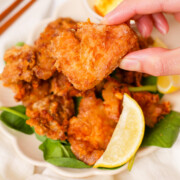
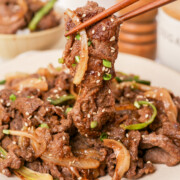
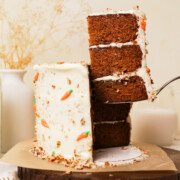
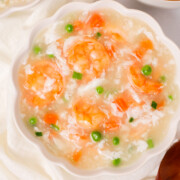
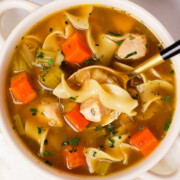
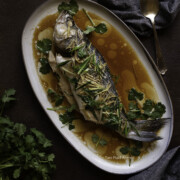
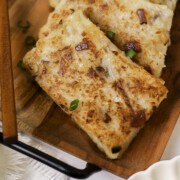

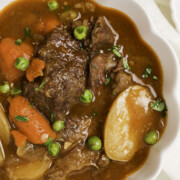
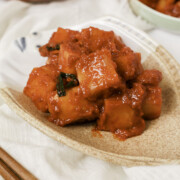
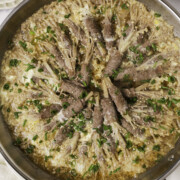
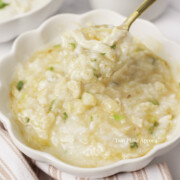
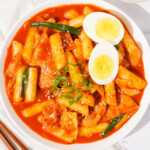




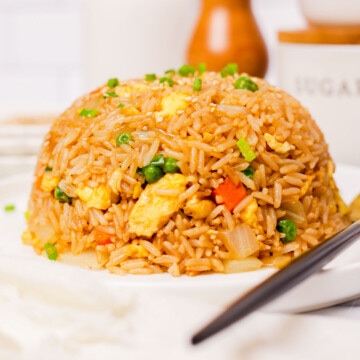
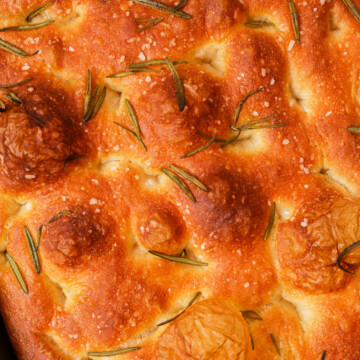
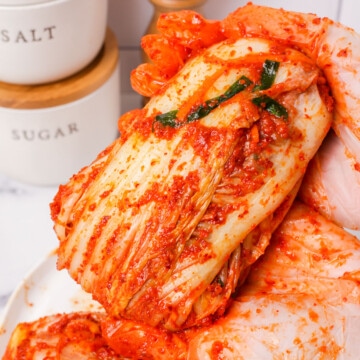
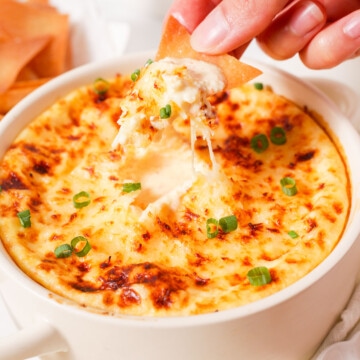
Comments
No Comments